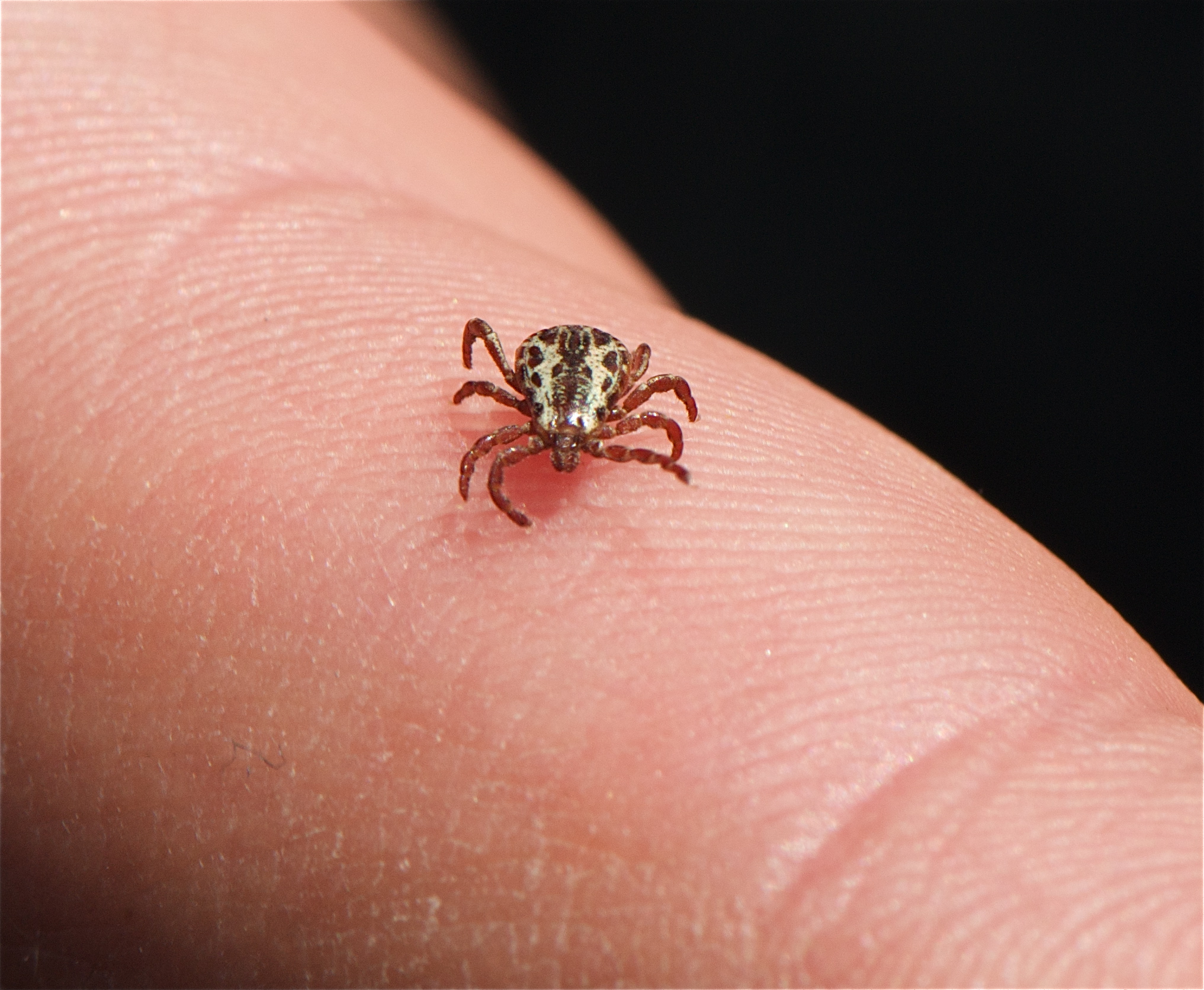When I was a little girl, we had a huge lilac bush in the yard. It was big enough to play in, hide under, and explore. And whenever we came in from that play, Mom started searching in our hair for ticks. When she found one, which she often did, she lit a cigarette, kept for just such occasions, and touched the tick with the lit end, causing the tick to withdraw its head from my scalp. We don’t use the cigarette anymore, but we do take ticks very seriously, hunting them down after we’ve been out in the woods, tweezing them off and flushing them down the toilet. We treat Dave and Clancy for fleas and ticks, and check them over, too, after they’ve been romping in tall grass. Last summer, after a walk along a trail through prairie grasses, Bryan counted over 20 ticks on his person, hunting for a place to latch on.
These little vampires are related to spiders and mites. Where insects have six legs and antennae, ticks, spiders, mites and their relatives have eight legs and no antennae. Ticks don’t have distinctly segmented body sections, and are designed solely as blood-sucking machines. A hard tick’s mouth parts form a beak-like structure and are located where the head would be. They consist of a pair of cutting and piercing tools which the tick uses to open a feeding hole in the host’s skin. The mouth parts are barbed, helping to stabilize the tick and making it hard to remove once the tick is settled in. Tick saliva contains anti-inflammatory proteins which, injected into the host, keep the host from noticing what’s going on while the tick feeds.
Ticks evolved some 100 million years ago. Today there are over 900 identified species, grouped into two main categories, hard ticks and soft ticks. The ticks we’re most familiar with here in Iowa are hard ticks, having a hard shield on their backs. The American dog tick, the blacklegged or deer tick, the lonestar tick, the brown dog tick, and the winter tick are some of the species found on Owl Acres. Of these, the deer tick and American dog tick are most likely to cause problems for humans.
Ticks never eat anything except blood. Most of them, including deer ticks, have four life stages. They need a blood meal each time they move from one stage to the next. The first stage is the egg. Ticks lay their eggs in the late summer or fall. The eggs hatch the next spring into six-legged larvae. When a larva hatches, it seeks a host using its ability to sense odor, body heat, moisture, and/or vibrations in the environment. If the host it finds, often a mouse or bird, is infected with a pathogen such as the bacteria that causes lyme disease or rocky mountain spotted fever, the tick will ingest the pathogen along with its meal. When it’s satisfied, the larva molts into its nymphal stage. At this point, a deer tick nymph is about the size of a poppy seed and has eight legs. The nymph rests for up to a year, becoming active again in the late spring of its second year when it finds a new host and begins its next meal. Once again, when it’s had enough to eat and is fat and round, the nymph molts into its adult form in the fall of its second year. The adult deer tick is about the size of a sesame seed. One more blood meal is required to fuel the final act.
When a male and a female tick find themselves on the same host, often a white-tailed deer, they eat their last meal, then find each other, mate, lay eggs and die.
Ticks can’t fly, and they can’t jump. So, they have to find their hosts some other way. Often they will sit on the tips of grasses at the edge of a path, holding on with their back legs and reaching out with their front legs. When something brushes by—a pant leg, a sock, a bit of fur—the tick latches on and begins hunting for a good spot to feed. They like warm, moist places so often end up in a person’s hair or armpit. Once they pick a spot, they settle in to feed. It takes 24 to 48 hours for a deer tick to get ensconced and begin feeding and injecting its saliva. It’s at this point that any pathogens the tick has picked up in its earlier meals are injected into the host’s bloodstream. This is why it is critical to remove ticks as soon as possible.
Bryan has just come in from cutting brush. He has a dog tick climbing on his pantleg looking for bare skin. He tweezes it off and flushes it down the toilet. Ticks have a remarkable ability to reattach if they’re not immediately disposed of, and flushing is the easiest way to guarantee it won’t be back. He’ll need to do a full body check in the shower to make sure there aren’t any more ticks.
Photo by Jerry Kirkhart
